Calves, heifers, and sometimes adult cows, can break out with round scabby sores caused by the fungus “ringworm”. (Humans, cats, dogs, horses, etc. are all susceptible as well, unfortunately.) Worry not, this is a fixable problem!
- Ringworm is treatable, although the complete sores may take several days to weeks to completely disappear.
- Ringworm is very easy to spread to other animals and humans – wear gloves when working with animals and wash your hands – your animal can give YOU ringworm!
- Once an animal or human gets ringworm, immunity usually prevents them from getting ringworm again.
- Merck Resource: Ringworm
What ringworm looks like:
Here are photos from a friend’s cow. See how the spots are fairly round? At this point, the cow had not yet been treated, so the scabs hide most of the infection:
Here’s ringworm on a human, the ring is very noticeable on fine human skin:
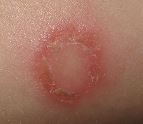
Here’s another view of ringworm on an animal, this is a severe case with thick scabs:

Treating Ringworm
Fungus thrives in wet, dark places. Animals, even well-cared-for animals, are at risk of contracting ringworm, especially in wet weather (spring is a prime time). DRY & AIRY solutions solve this problem!
- Identify possible ringworm:
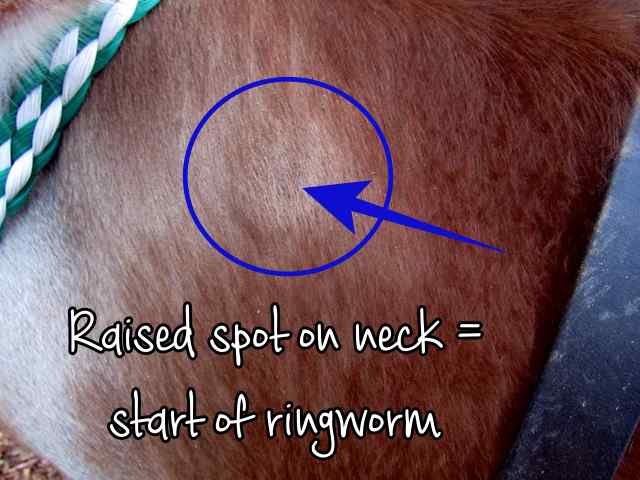
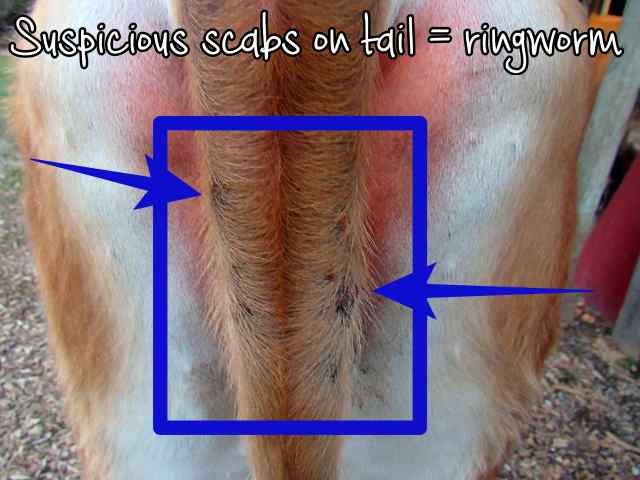
- Wear disposable gloves. Prepare iodine scrub by mixing iodine with water and using a dedicated toothbrush. An old toothbrush that you don’t mind throwing away (after the ringworm is cleared up) is a good option.
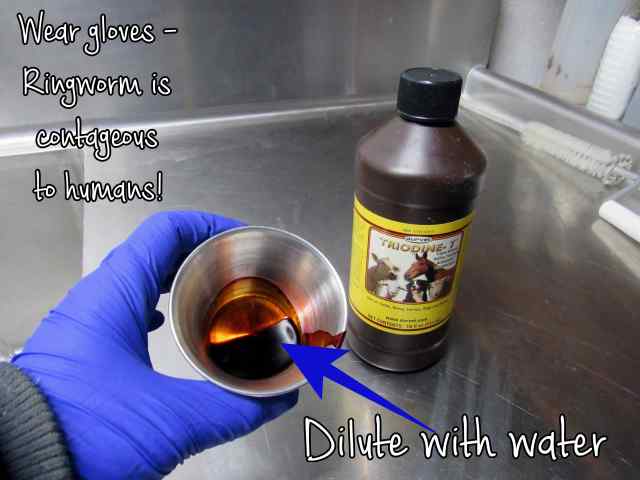
- Remove the scab forming over the top of the ringworm by scraping the scab off with a stiff bristle brush (an old toothbrush, for example – throw away once done treating). Scrub the exposed wound with the iodine mixture. The wound may bleed – this is a GOOD sign – you’ve reached the base of the infection. Use the iodine solution to remove any scab and rinse the area well with the iodine solution.

- Leave the sores open to breathe – do not seal the wound with a bandage (depressed air flow is the perfect home for fungus). Ample sunshine and fresh air help substantially. Supplements of Vitamins A & D can help as well. Anything to boost the immune system.
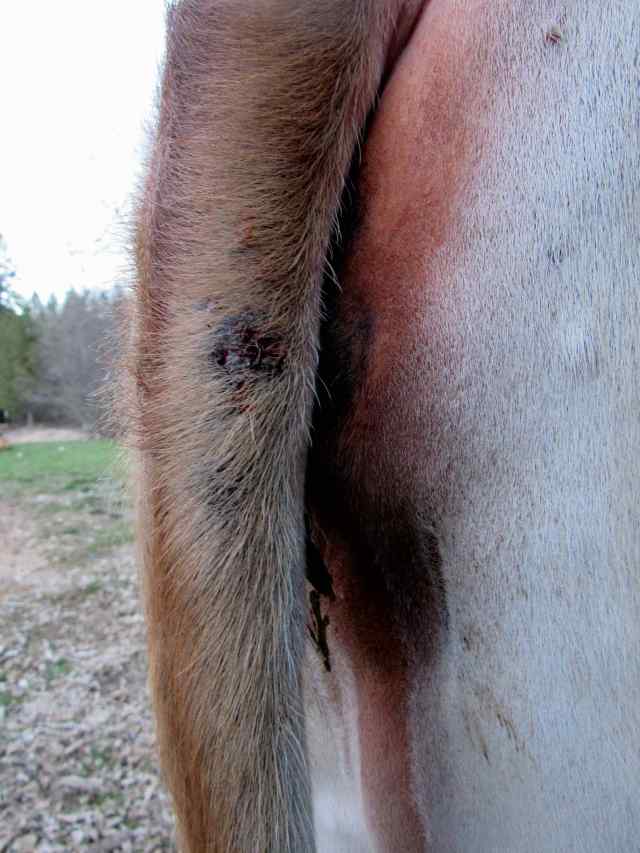
- Repeat as needed. Usually 2-3 times for the full protocol should be sufficient, except in severe cases. The sooner you find and treat the ringworm, the shorter the recovery time. You know you’re on the mend when the scab stops forming in a thick crust and eventually the edges shrink & hair regrows.
- Congratulations, you and your animal survived ringworm. Welcome to the ringworm-immunity club!
A note: When we housed our dairy heifers inside a barn without access to pasture or outdoor lots, they almost always came down with ringworm. They would heal and usually not get ringworm again in their life, as they built up resistance. Now, our heifers are housed either outdoors (in wooded lots) or in airy freestall housing with access to pasture or dry lot. We have had only 1 case of ringworm in the past several years.



